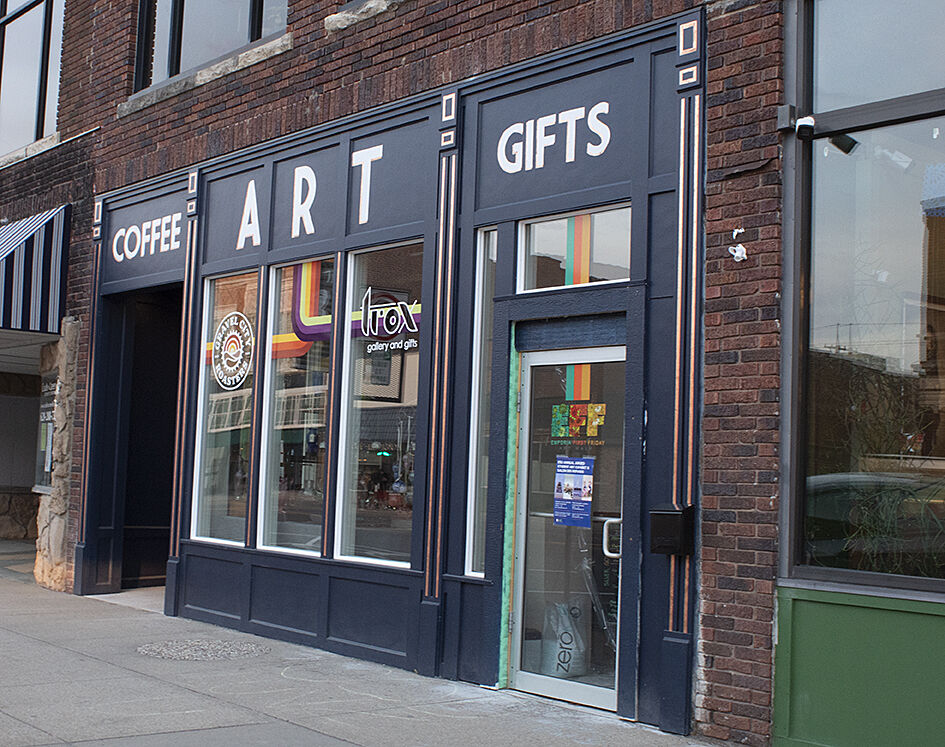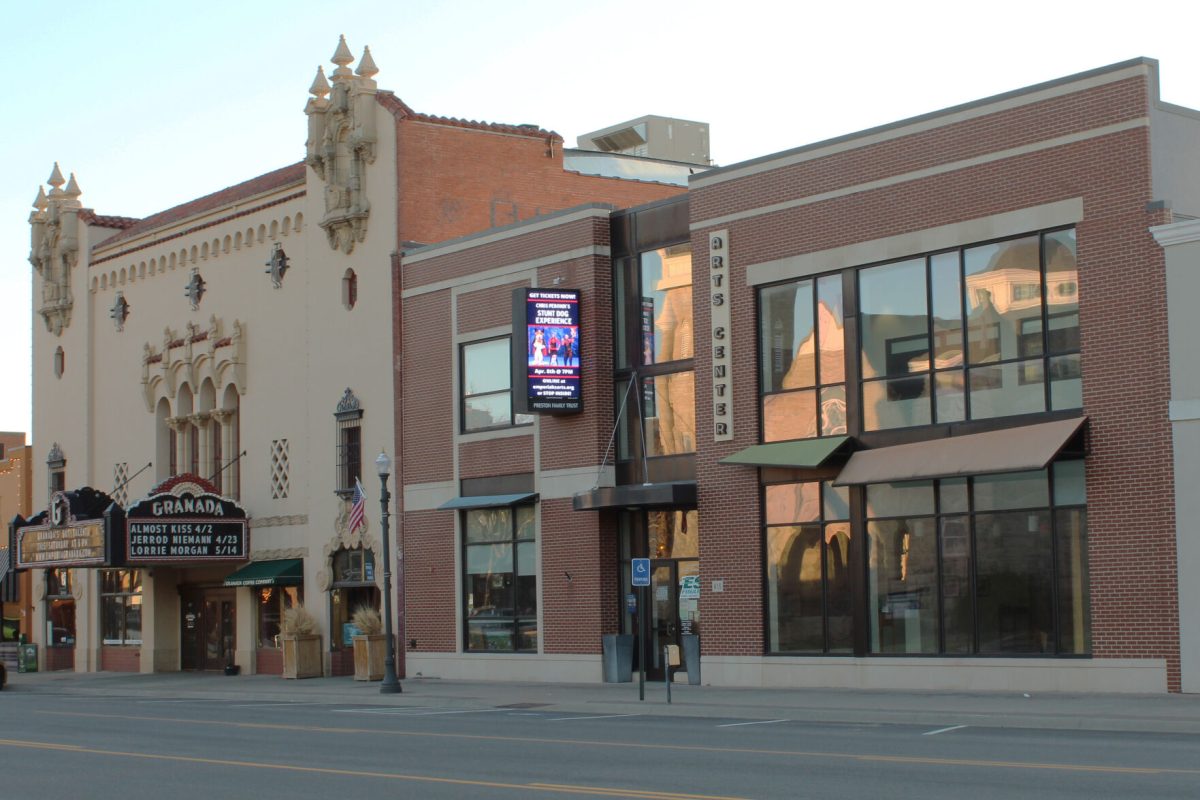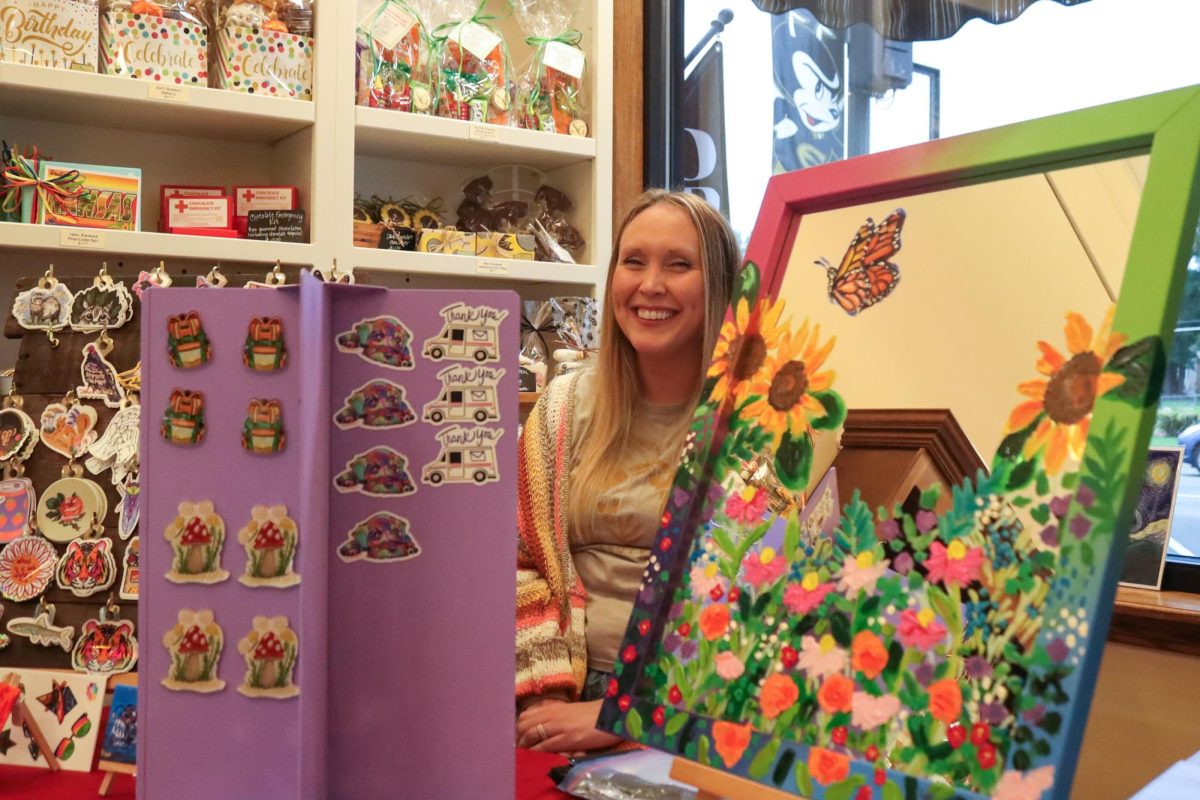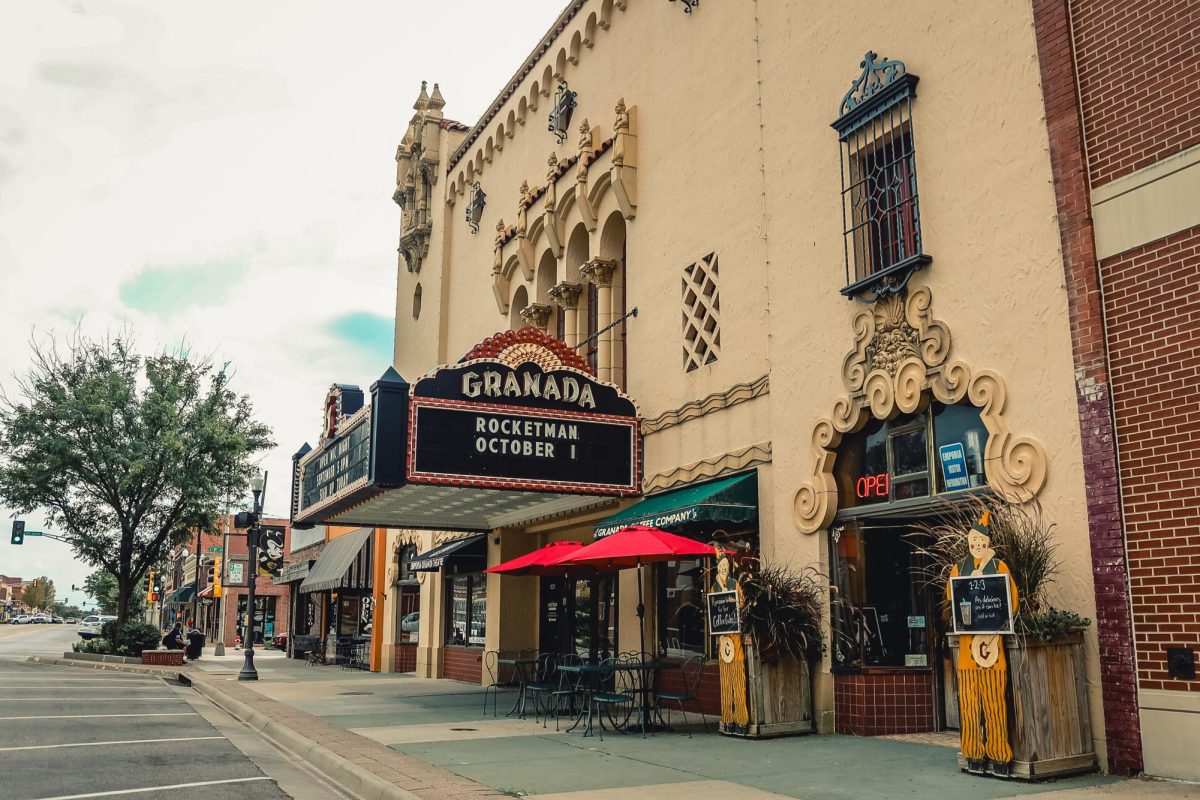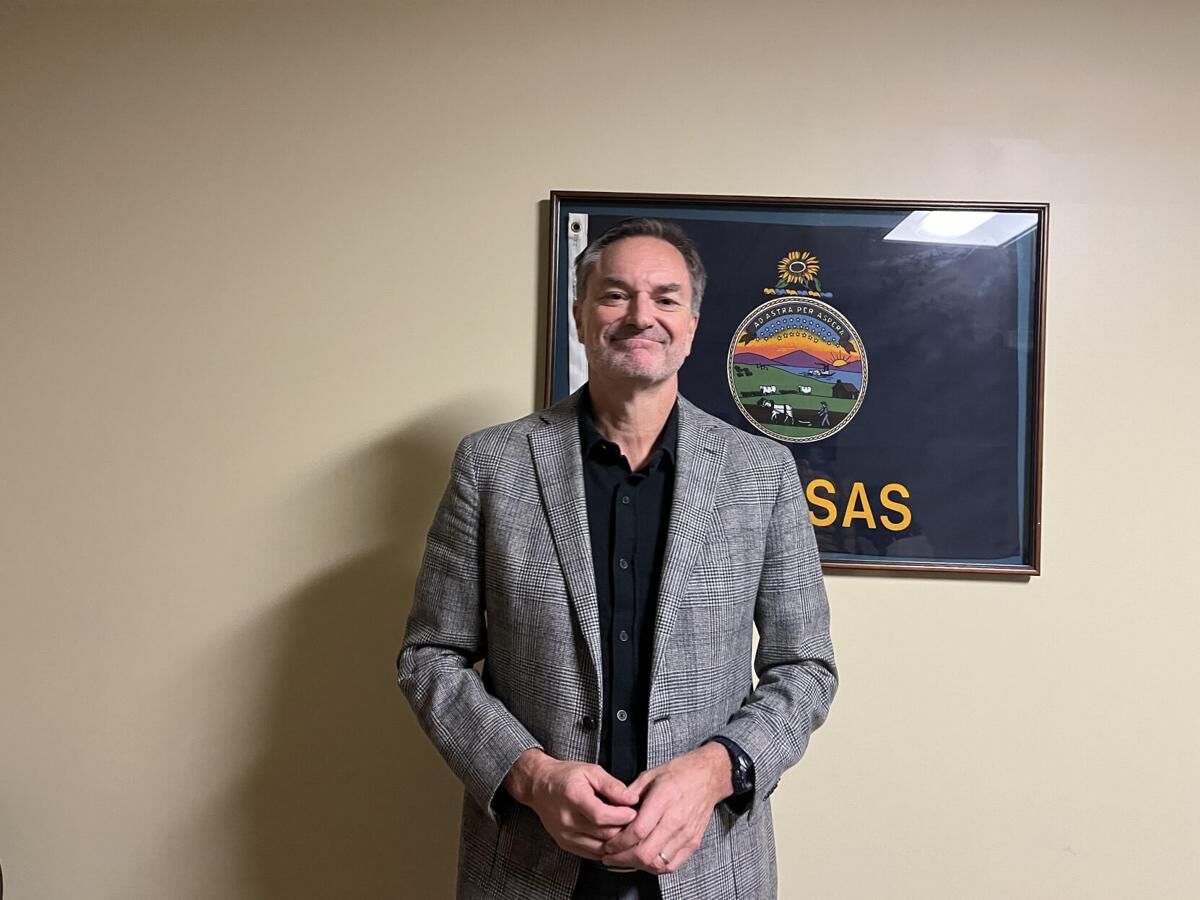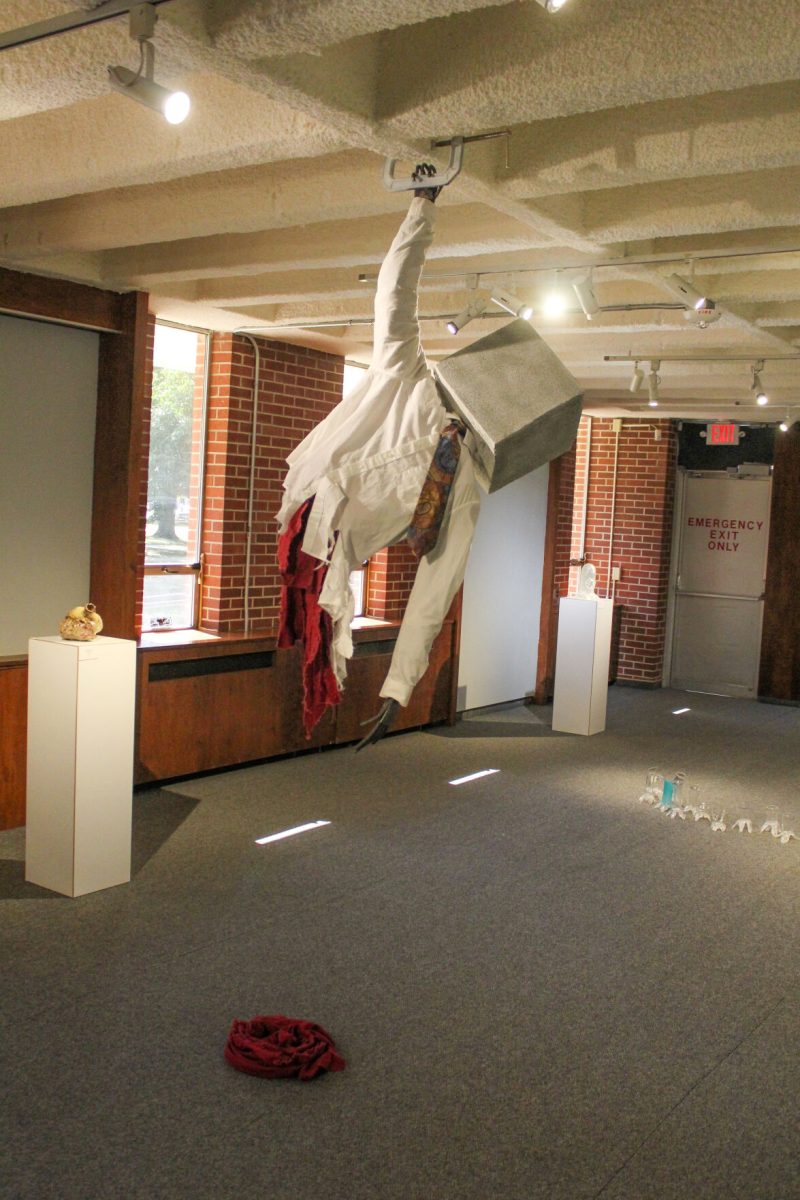In 1863, Paris, a group of artists found themselves outraged when their work was refused by a jury tasked with deciding what was fit to be shown in the official Paris Salon.
Thus began the Salon des Refusés, a secondary show for the rejected artists, many of whom became some of the most well-known artists of their time, according to oxfordreference.com.
Now, on April 1 – 28, the Emporia State Department of Art will be hosting the 2022 Annual Juried Student Exhibition in the Emporia Arts Center, but also a Salon de Resusés Exhibit in Trox Gallery & Gifts.
“We think it’s important for students to get professional experience showing their work,” said Roberta Eichenberg, professor of art and galleries director. “And putting it out there to the public is different than showing it in a critique.”
Submissions for the show were open to all students who created a piece of art generated from a class at Emporia State and each student could submit up to three pieces.
Once the art was submitted, this year’s juror, local photographer Dave Lieker, chose which ones would be displayed in the main show. Once those selections were made, one piece from each student who submitted work was selected to be shown in the Salon de Refusés, according to this year’s call for entry packets.
“I let the jurors pick what they want,” Eichenberg said. “I do ask that they pick kind of a range because we offer a lot of different concentrations and areas of study, but if there’s something that, if he feels that craft is not up to par, I am not a censor in that sense, I don’t tell him what to do.”
While the primary show is ultimately up to the juror’s personal opinions and view on the quality of the art, the Salon de Resusés allows for works that don’t make it in to still be shown, even though they didn’t fit what the juror was looking for, it isn’t “necessarily a reflection on the quality of the artwork,” according to Emeline Fuller, employee of Trox Gallery & Gifts and ESU art department alumnus.
“I feel, and the faculty too, that an outside juror has their opinion and their position,” Eichenberg said. “Their likes and dislikes and prejudice and preferences and that doesn’t mean that all the students’ work is not good or not valid. So, we think it’s kind of that, they may be ahead of their time and I’ve seen that in jurors.”
While most people want to see their art accepted, not all jurors, or even viewers, will share in that appreciation, and rejection isn’t always avoidable.
“The thing is,” Fuller said. “Being a professional artist, being a student artist, rejection, it’s part of the process, it’s something you have to live with and you have to expect. It’s not the end of the world, because it is just going to happen. So, kind of helping students through that process too, I know, is something that ESU really cares about.”
Being off campus also adds to the difficulty of the show and pushes the arts even farther, getting them out of their campus space and into the public, according to Eichenberg, although this shouldn’t stop people from seeing the work the students put into their creations.
“Even though it’s off campus,” Eichenberg said. “It’s only a ten-minute walk. The Emporia Art Center’s a great place for not only art, but performance art.”

